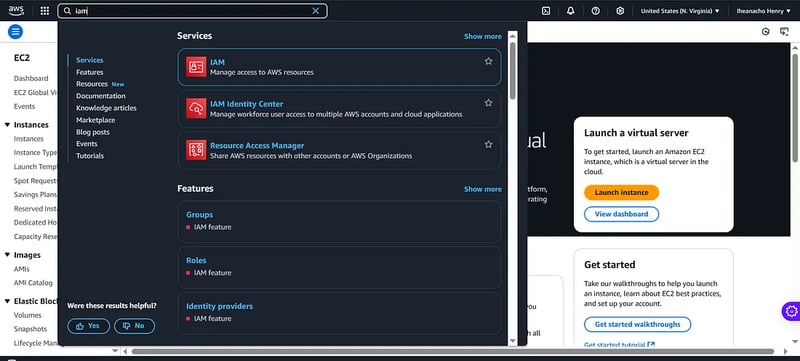Impact of Technical Debt on Software Testing
Technical debt is a critical concept that refers to the long-term costs associated with taking shortcuts or making quick fixes. While it can enable faster delivery of products, it often leads to significant challenges in maintaining quality, especially in testing. Let’s dive in to explore how technical debt affects test processes, the risks involved, and practical approaches to manage it effectively. Understanding Technical Debt in Testing Technical debt arises when teams prioritize immediate results over long-term quality, often due to tight deadlines or resource constraints. In testing, this manifests as: Poorly documented Test Strategy document: A poorly documented Test Strategy can result from insufficient attention during the test planning phase, leading to confusion and ambiguity in the testing process later in the execution cycle. Skipping Test Refactoring: Neglecting to update tests can lead to disorganized test suites that are hard to maintain and prone to introducing new bugs. Postponing Automation: Delaying the implementation of automated tests results in incomplete coverage and unreliable test outcomes, increasing future workload. Inadequate Documentation: Poor documentation complicates onboarding for new team members and hinders existing members from efficiently referencing past work. These shortcuts may seem beneficial initially, allowing teams to meet deadlines and respond quickly to changing requirements. However, the accumulation of technical debt can lead to severe long-term consequences. Long-Term Costs of Ignoring Technical Debt Increased Maintenance Costs: What begins as a minor oversight can escalate into a major issue. For example, failing to refactor a test suite can transform a simple cleanup task into an extensive project that consumes significant resources. Higher Risk of Bugs and Regressions: Insufficient test coverage and flaky tests increase the likelihood of bugs slipping through. These issues not only degrade software quality but also erode trust among users and stakeholders. Increased Manual Work: Failing to implement automation can lead to tests being executed manually, prolonging the overall test cycle. Repeated manual testing may cause frustration and dissatisfaction among testers, ultimately reducing the team’s productivity. Strategies for Managing Technical Debt in Testing Prioritize Refactoring: Incorporate regular refactoring sessions into your workflow to keep test suites organized and maintainable. This will help avoid larger issues down the line. Automate Early: Invest time in automation as soon as feasible. This not only improves coverage but also reduces manual testing effort over time. Enhance Documentation: Maintain up-to-date documentation for tests and processes to facilitate knowledge transfer within the team. Communicate with Stakeholders: Clearly articulate the implications of technical debt to product managers and stakeholders. Frame discussions around how addressing technical debt can enhance product stability and user satisfaction. Conclusion I have had these technical debts some way or the other in my work. Let me know in the comments what other challenges you faced while testing your applications.

Technical debt is a critical concept that refers to the long-term costs associated with taking shortcuts or making quick fixes. While it can enable faster delivery of products, it often leads to significant challenges in maintaining quality, especially in testing.
Let’s dive in to explore how technical debt affects test processes, the risks involved, and practical approaches to manage it effectively.
Understanding Technical Debt in Testing
Technical debt arises when teams prioritize immediate results over long-term quality, often due to tight deadlines or resource constraints. In testing, this manifests as:
Poorly documented Test Strategy document: A poorly documented Test Strategy can result from insufficient attention during the test planning phase, leading to confusion and ambiguity in the testing process later in the execution cycle.
Skipping Test Refactoring: Neglecting to update tests can lead to disorganized test suites that are hard to maintain and prone to introducing new bugs.Postponing Automation: Delaying the implementation of automated tests results in incomplete coverage and unreliable test outcomes, increasing future workload.
Inadequate Documentation: Poor documentation complicates onboarding for new team members and hinders existing members from efficiently referencing past work.
These shortcuts may seem beneficial initially, allowing teams to meet deadlines and respond quickly to changing requirements. However, the accumulation of technical debt can lead to severe long-term consequences.
Long-Term Costs of Ignoring Technical Debt
Increased Maintenance Costs: What begins as a minor oversight can escalate into a major issue. For example, failing to refactor a test suite can transform a simple cleanup task into an extensive project that consumes significant resources.
Higher Risk of Bugs and Regressions: Insufficient test coverage and flaky tests increase the likelihood of bugs slipping through. These issues not only degrade software quality but also erode trust among users and stakeholders.
Increased Manual Work: Failing to implement automation can lead to tests being executed manually, prolonging the overall test cycle. Repeated manual testing may cause frustration and dissatisfaction among testers, ultimately reducing the team’s productivity.
Strategies for Managing Technical Debt in Testing
Prioritize Refactoring: Incorporate regular refactoring sessions into your workflow to keep test suites organized and maintainable. This will help avoid larger issues down the line.
Automate Early: Invest time in automation as soon as feasible. This not only improves coverage but also reduces manual testing effort over time.
Enhance Documentation: Maintain up-to-date documentation for tests and processes to facilitate knowledge transfer within the team.
Communicate with Stakeholders: Clearly articulate the implications of technical debt to product managers and stakeholders. Frame discussions around how addressing technical debt can enhance product stability and user satisfaction.
Conclusion
I have had these technical debts some way or the other in my work.
Let me know in the comments what other challenges you faced while testing your applications.










































































































































































![[The AI Show Episode 143]: ChatGPT Revenue Surge, New AGI Timelines, Amazon’s AI Agent, Claude for Education, Model Context Protocol & LLMs Pass the Turing Test](https://www.marketingaiinstitute.com/hubfs/ep%20143%20cover.png)





































































































































































































































.png?#)







































.webp?#)


























































































![[Fixed] Gemini app is failing to generate Audio Overviews](https://i0.wp.com/9to5google.com/wp-content/uploads/sites/4/2025/03/Gemini-Audio-Overview-cover.jpg?resize=1200%2C628&quality=82&strip=all&ssl=1)

![What’s new in Android’s April 2025 Google System Updates [U: 4/14]](https://i0.wp.com/9to5google.com/wp-content/uploads/sites/4/2025/01/google-play-services-3.jpg?resize=1200%2C628&quality=82&strip=all&ssl=1)














![Apple Seeds tvOS 18.5 Beta 2 to Developers [Download]](https://www.iclarified.com/images/news/97011/97011/97011-640.jpg)
![Apple Releases macOS Sequoia 15.5 Beta 2 to Developers [Download]](https://www.iclarified.com/images/news/97014/97014/97014-640.jpg)






























































































































